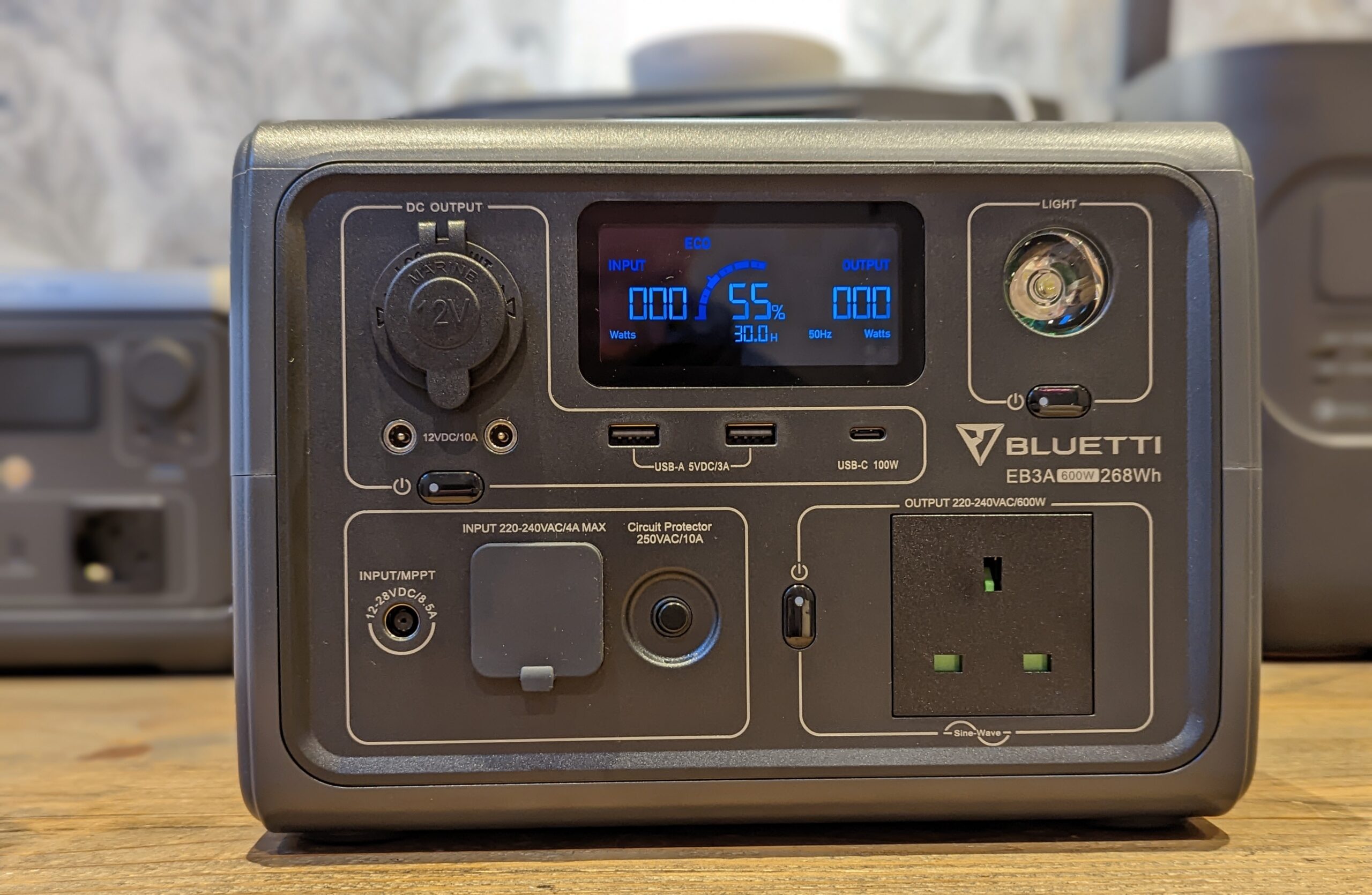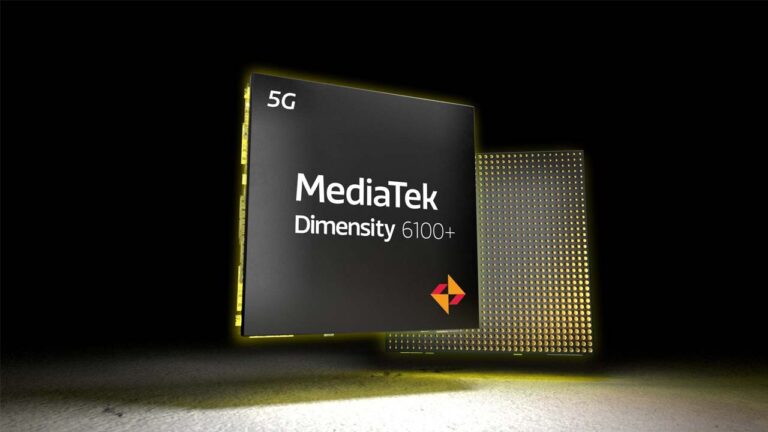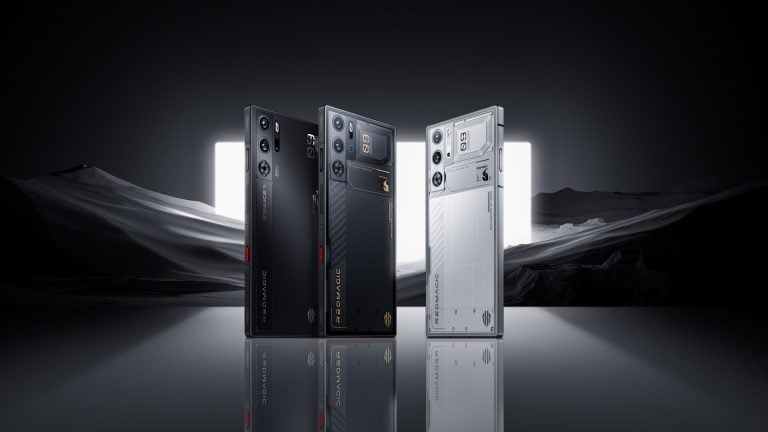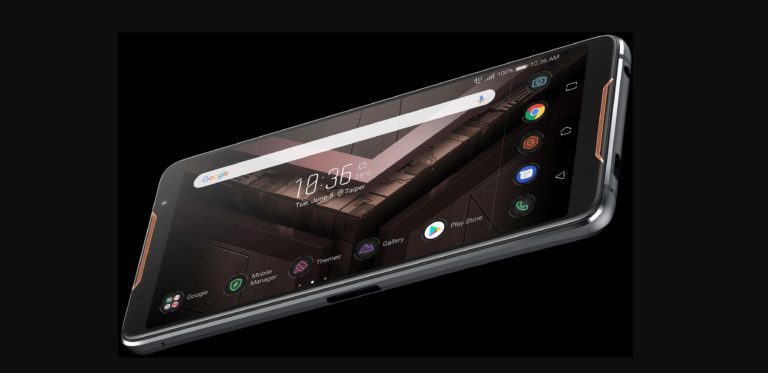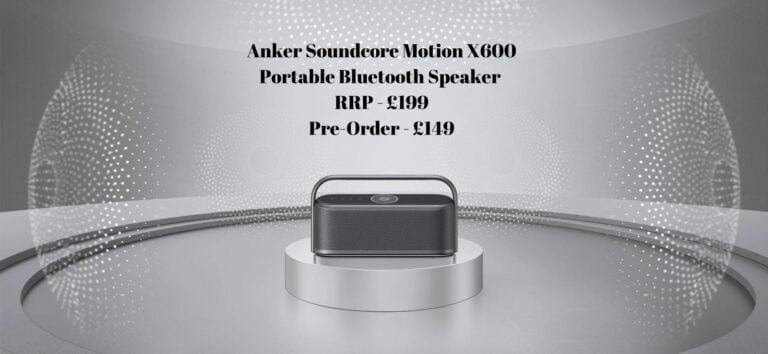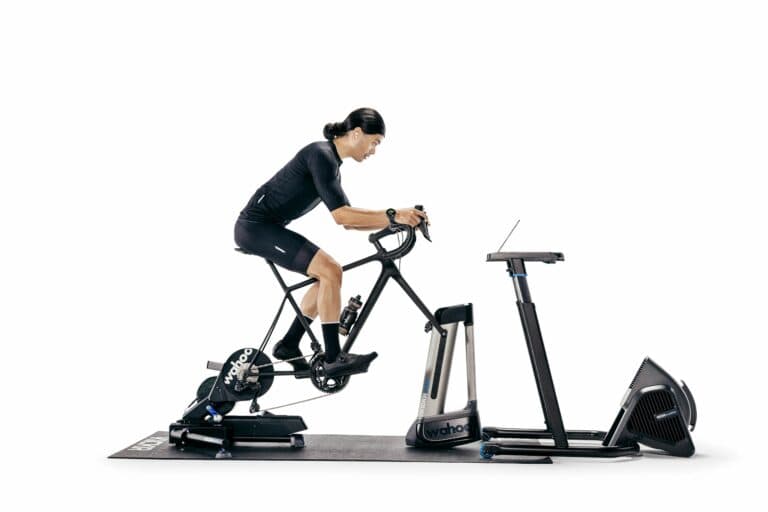Any links to online stores should be assumed to be affiliates. The company or PR agency provides all or most review samples. They have no control over my content, and I provide my honest opinion.
I have been on a roll of reviewing portable power stations recently. However, I have only reviewed options from EcoFlow and Jackery. Both brands make superb power stations, but there are plenty of other options on the market, and BLUETTI is probably the next most popular brand there is.
The BLUETTI EB3A launched within the last two months and is the smallest capacity and most affordable option they have.
BLUETTI tend to offer excellent value for money in terms of capacity compared to EcoFlow and Jackery. But in this case, it is not quite the cheapest, though I’d argue the overall features justify the cost.
| Preview | Product | Rating | Price | |
|---|---|---|---|---|

| BLUETTI EB3A Portable Power Station, 268Wh LiFePO4 Power... | £269.00 | Buy on Amazon |
Specification
- Capacity: 268.8Wh (12Ah)
- Type: LiFePO4 (Lithium Iron Phosphate)
- Life Cycles: 2,500+ Cycles to 80% Original Capacity
- Shelf-life: Recharge to 80% Every 3-6 Months
- Management System: MPPT Controller, BMS, etc
- AC Outlets: 1 x 220V-240V/2.6A Outlets, 600W In Total
- Inverter Type: Pure Sine Wave
- Surge Power: 1,200W
- USB-C Port: 1 x 100W Max
- USB-A Port: 2 x 5V/3A USB-A
- DC Outlets:
- 1 x 12V/10A (Car Outlet)
- 2 x 12V/10A DC 5521 (5.5mm Outlets)
- Wireless Charging Pad: 1 x 15W Max
- AC Charging Cable (Standard Mode): 268W Max
- AC Charging Cable (Turbo Mode): 330W Max
- Solar Input: 200W Max, VOC 12-28VDC/ 8.5A
- Car Input: 12/24V from Cigarette Lighter Port
- Maximum Input: 430W, with AC and Solar Input Simultaneously
- AC Charging Cable (Turbo Mode 330W): ≈1.3-1.8 Hours
- AC Charging Cable (Standard Mode 268W): ≈1.5-2.0 Hours
- Solar (200W): ≈1.8-2.0 Hours (With prime sunshine, ideal orientation and low temperature)
- 12V/24V Car Outlet (100W/200W): ≈3.2-3.7 or 1.9-2.4 Hours
- AC + Solar (430W): ≈1.2~1.7 Hours (With prime sunshine, ideal orientation and low temperature)
- Dual AC (430W): ≈1.2~1.7 Hours (With optional BLUETTTI T200S Adapter)
- Pass-through Charging: Yes
- Weight: 10.14lbs/4.6kg
- Dimensions (LxWxD): 10.04*7.09*7.20in/255*180*183mm
- Operating Temperature: -4-104℉ (-20-40℃)
- Storage Temperature: 32-104°F (0-40°C)
- Warranty: 24 Months
Features / App






There are a few unique features of this unit that makes it stand out from the competition.
While the capacity is on the low end, the AC output is much higher than you’d expect. If you look at EcoFlow, the output exceeds the £549 RIVER 2 MAX. The low capacity means that there is only limited use for this high-wattage output, but it is nice to have that flexibility.
This is also the first unit I have used that has wireless charging. When the weather improves, and I go camping, it is a convenient feature that allows me to place my phone on top of the unit rather than mess around with cables.
The app has limited functionality but a couple of useful features. You alter the charge speeds, you have the standard mode, silent/fanless, or boost mode, which ups the input to 330W.
The app also has a heavy-lifting toggle. This works in the same way as X-Boost on EcoFlow units. For certain appliances, it can run them even though they may go up to 1200W. I believe it does this by lowering the voltage, which makes the appliance run slower than expected; for example, a kettle may boil at half the speed.
Peak Output and Surge Protection
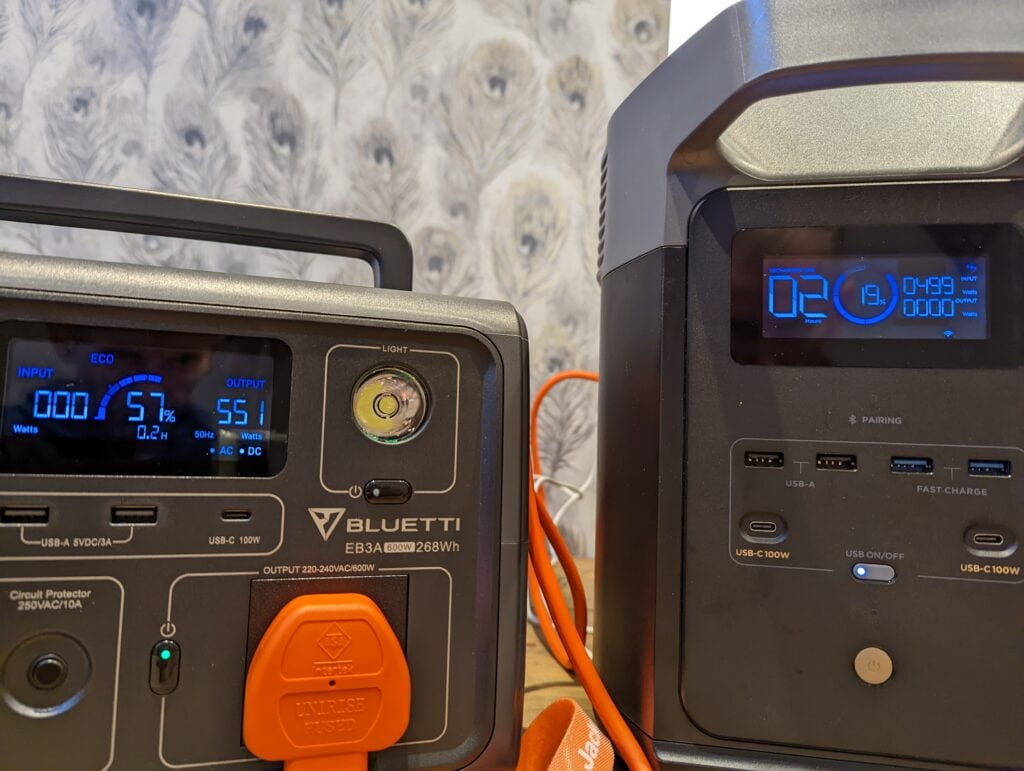

With my growing number of portable power stations at home, I was able to attempt some semi-accurate testing of the peak output/surge protection. I used the BLUETTI EB3A to charge my EcoFlow DELTA 2. With the DELTA 2, you can adjust the charge rate, allowing me to bring it down to the same speed as the EB3A.
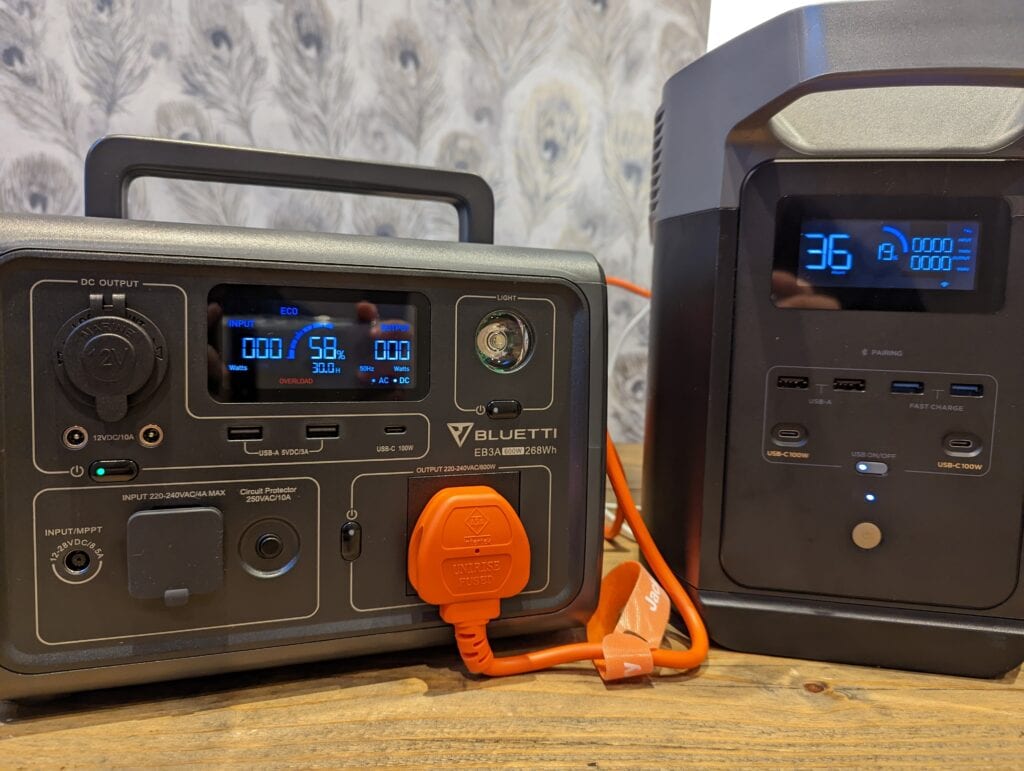

Setting the DELTA 2 to 600W triggered the overload protection. While the DELTA 2 draws 600W, the EB3A hits 639W and is switched off. Dialling it back to 500W, the DELTA 2 drew the correct wattage while the EB3A output 550W. This seems to happen with all power stations and is obviously the overhead you pay for outputting from one unit and charging the other. However, in the case of the EB3A the output power is quite a bit higher than the input power, there is typically a 40-50W difference vs about 20W of other devices. This could just be a reporting issue by the unit, but it is worth remembering as you would need to factor in this overhead when running anything close to the maximum power.
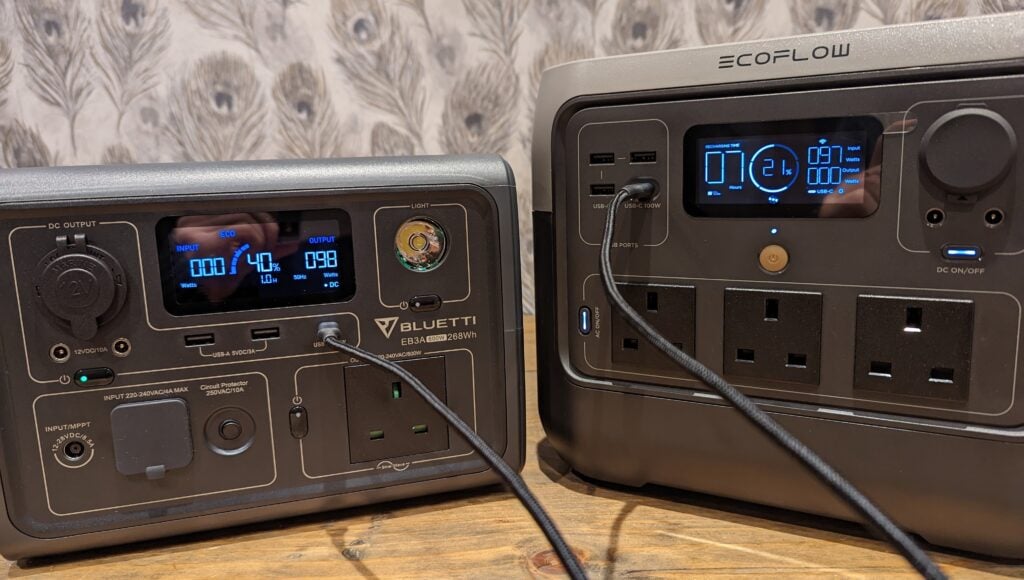

For the USB-C, it has a peak output of 100W, and I was able to charge my EcoFlow RIVER 2 Pro at that rate.
Mains Charging
For AC charging, I used my Jackery Explorer 2000 Pro, which can output up to 2200W. In this scenario, the EB3A drew 265W, which is about what you would expect.
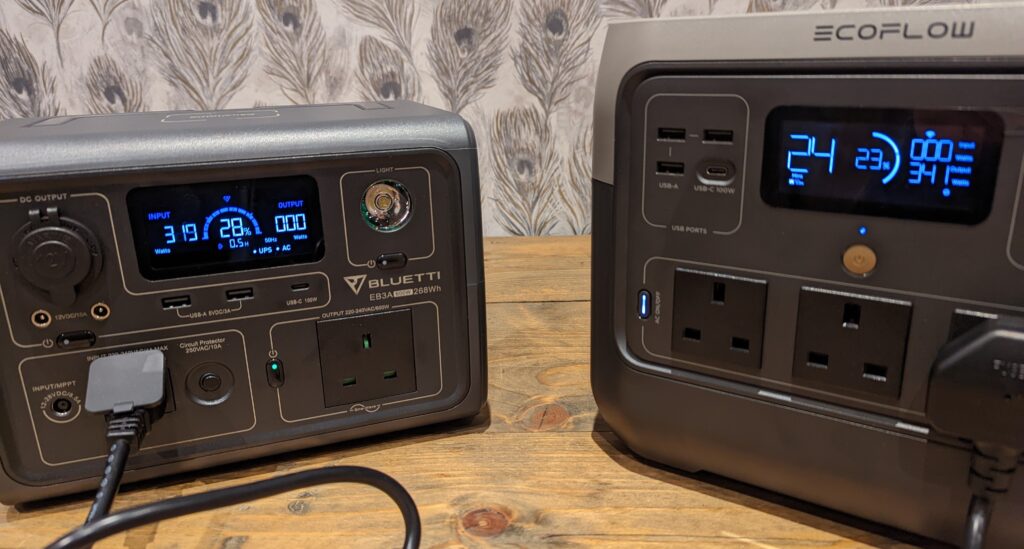

Within the BLUETTI app, you can enable boost mode, which will increase the charge speed to 330W. The app warns you that you should only use this when needed as it will shorten the battery life.
Solar Charging
BLUETTI didn’t send one of the solar panels, but this has a maximum 200W input, and it uses a DC port rather than the XT60 ports you will find on competing brands.
The weather in the north of the UK has been dreadful at the moment, and I have struggled to get a quarter of the rated solar output from any of the panels I have. However, in the summer, this is a great option and helps keep you off the grid for longer and save money in the long term.
Fan Noise
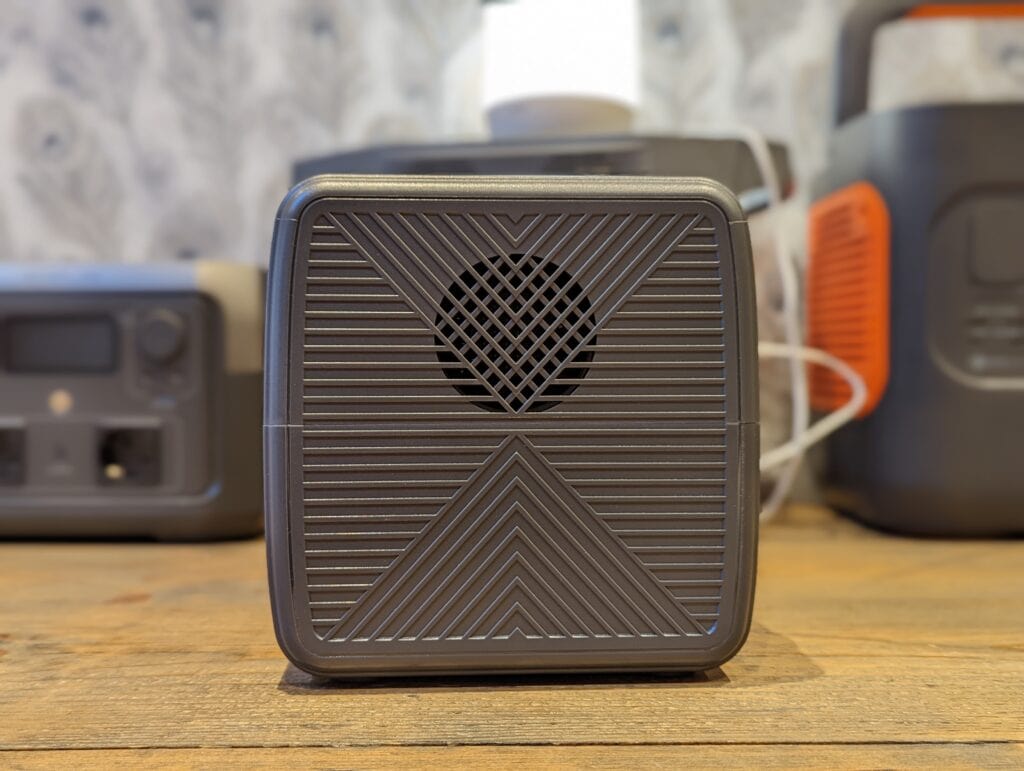

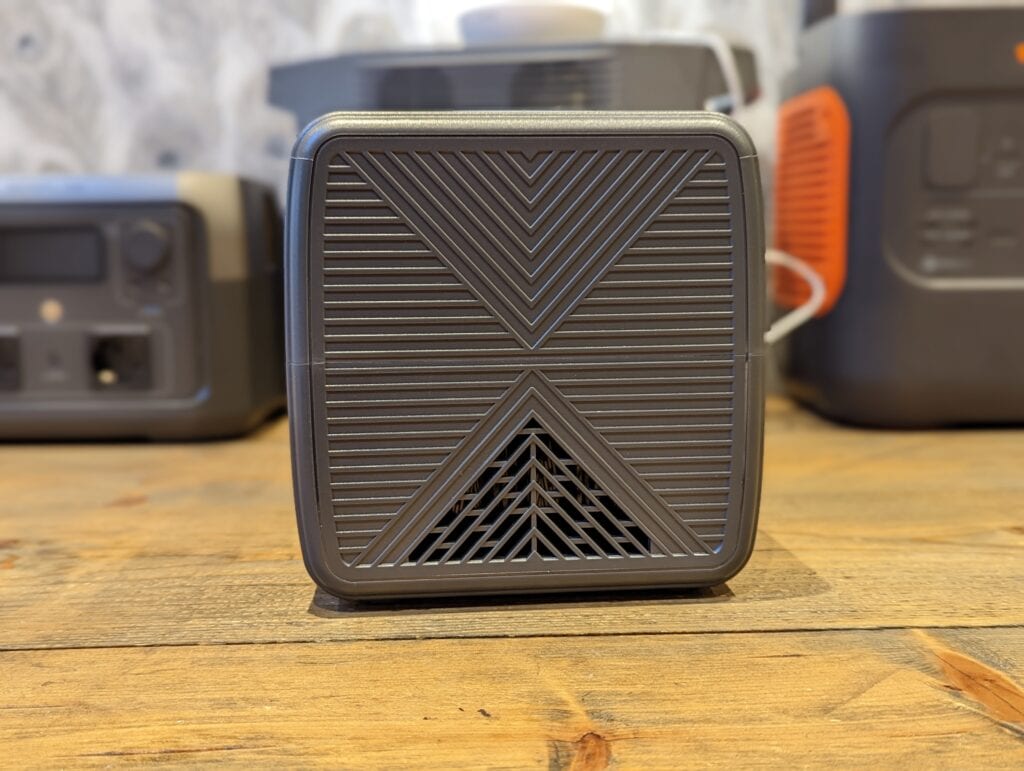

There is a visible fan where the left air vent is; I am unsure if there are more fans.
The fan noise on this unit has been excellent. More often than not, it either doesn’t spin up the fans or is quiet enough that I don’t notice.
When I was experimenting with charging between power station units, I did notice the fan kicked in once, but it was drowned out by the EcoFlow unit I was running next to it.
When I charged with the boost setting, the fan noticeably kicked in, and I could just about hear them over the music I was playing. The sound profile of the fan is good. It has a low to mid pitch with a consistent woosh.
Price and Alternative Options
| Preview | Product | Rating | Price | |
|---|---|---|---|---|
   | BLUETTI EB3A Portable Power Station, 268Wh LiFePO4 Power... | £269.00 | Buy on Amazon |
At the time of writing, the BLUETTI EB3A is on sale for £349 with an RRP of £369. Amazon has it for the same price with a £20 voucher taking it down to £349.
| Preview | Product | Rating | Price | |
|---|---|---|---|---|
  | Jackery Portable Power Station Explorer 240, 230V/200W Pure... | £259.99 | Buy on Amazon | |
  | Anker Portable Power Station 256Wh, 521 Portable Generator,... | £189.00 | Buy on Amazon |
The smallest Jackery is the Explorer 240, which is a bit of a bargain at £220 currently (£260 RRP). However, the low price is because it is not quite as good, there are only 2xUSB-A ports, and the AC output is just 200W with a surge of 400W. It also uses NMC batteries which have a shorter lifespan.
The EcoFlow RIVER 2 has an RRP of £269 but has 300W total (surge 600W) and a less powerful 60W USB-C.
Anker has the 256Wh 521 PowerHouse, which is limited to 200W max output and costs about £330, but it regularly drops to around £240.
Overall
The BLUETTI EB3A is an excellent small portable power station. It costs a bit more than the small capacity options from other brands, but it can output at 600W, which gives it a significant advantage. However, the battery would only last a bit under 30 mins in this scenario.
The wireless charging is a useful addition, allowing me to place my phone on top of the unit without messing around with cables.
Overall, due to the high power output, I’d say this is the best small-capacity power station, but you are paying a little extra for that.
BLUETTI EB3A Portable Power Station Review Rating
Summary
The BLUETTI EB3A is an excellent small portable power station. It costs a bit more than the small capacity options from other brands, but it can output at 600W, which gives it a significant advantage.
Overall
90%-
Overall - 90%90%
Pros
- 600W peak output with 1200W surge and 1200W power lifting gives you much more flexibility in what you power vs competing brands
- 15W wireless charging is useful
- 100W USB-C output is better than most other options at this capacity
- LiFePO4 battery for long life
Cons
- Slight price premium due to superior features
- Quite a high overhead with the output wattage vs input on the other device
I am James, a UK-based tech enthusiast and the Editor and Owner of Mighty Gadget, which I’ve proudly run since 2007. Passionate about all things technology, my expertise spans from computers and networking to mobile, wearables, and smart home devices.
As a fitness fanatic who loves running and cycling, I also have a keen interest in fitness-related technology, and I take every opportunity to cover this niche on my blog. My diverse interests allow me to bring a unique perspective to tech blogging, merging lifestyle, fitness, and the latest tech trends.
In my academic pursuits, I earned a BSc in Information Systems Design from UCLAN, before advancing my learning with a Master’s Degree in Computing. This advanced study also included Cisco CCNA accreditation, further demonstrating my commitment to understanding and staying ahead of the technology curve.
I’m proud to share that Vuelio has consistently ranked Mighty Gadget as one of the top technology blogs in the UK. With my dedication to technology and drive to share my insights, I aim to continue providing my readers with engaging and informative content.
Last update on 2024-04-20 / Affiliate links / Images from Amazon Product Advertising API

